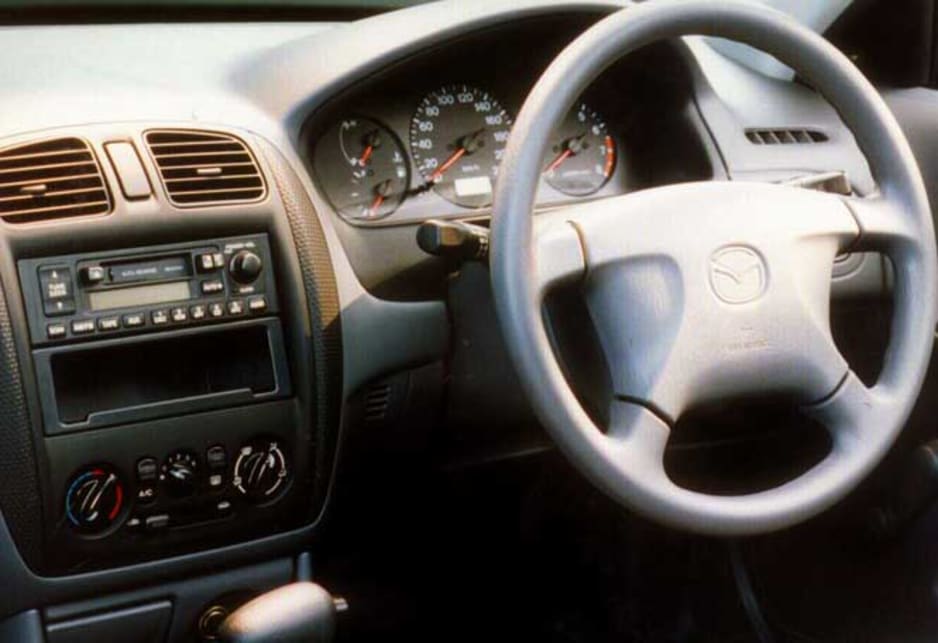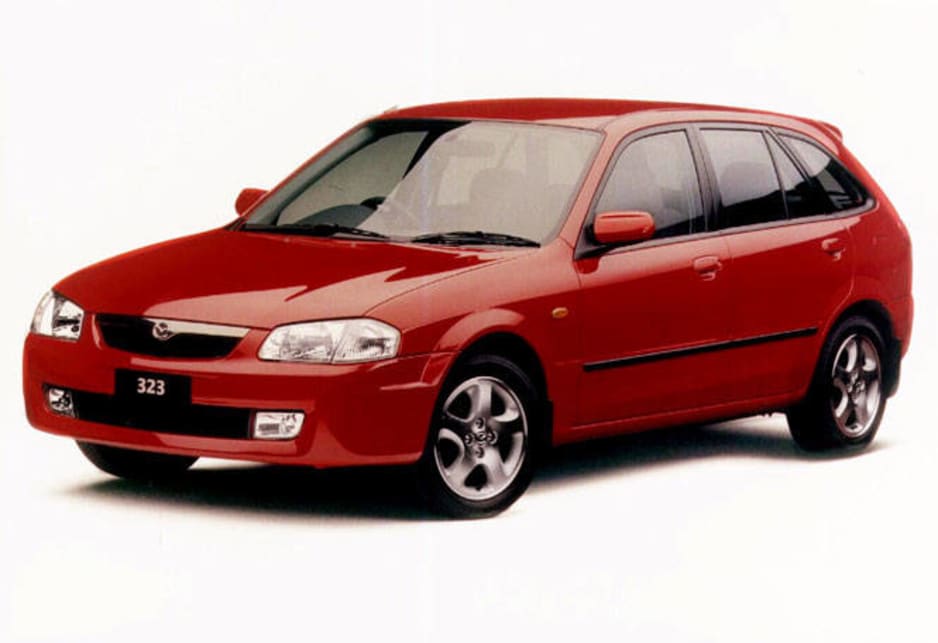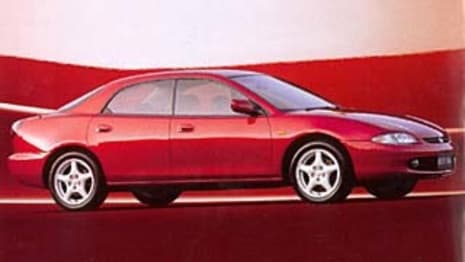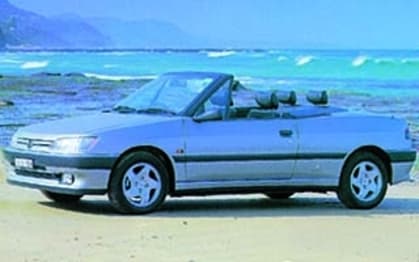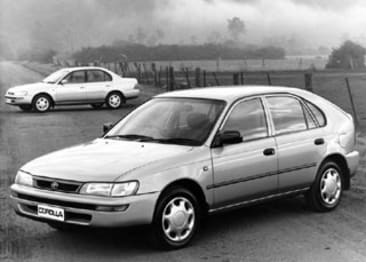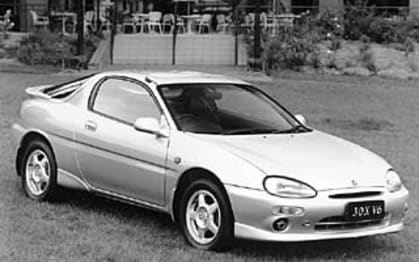
Used Mazda 323 review: 1994-1998
- Mazda 323
- Mazda 323 1994
- Mazda 323 1995
- Mazda 323 1996
- Mazda 323 1997
- Mazda 323 1998
- Mazda 323 Reviews
- Mazda Reviews
- Mazda Sedan Range
- Mazda Hatchback Range
- Sedan
- Hatchback
- Mazda
- Used Car Reviews
- Buying tips
Mazda has often done things differently. Rather than serve up similar cars to everyone else they have often trodden a different path and come up with something a little more interesting than the run-of-the-mill offerings from their rivals. Their use of the rotary engine is a prime example, the MX5 sports car is another, but it if that’s not enough to convince you, take a look at the new RX8. It was no different back in 1994 when Mazda unveiled its new 323 and redefined what a small car could be.
Before that 323 small cars were generally unsophisticated, rather plain cars you bought if you couldn’t afford to run a real car. They were essentially a cheap and cheerful means of transport with little charisma, but the 323 challenged those notions with a package that was stylish and sporty, while at the same time still offering the practicality demanded of a small car as an everyday driver.
The styling of the 323 was what grabbed your attention right off the bat. It was low and sleek with fast lines and slim pillars that gave it a pillarless look reminiscent of a sporty coupe rather than a regular three-box sedan that might normally be seen doing duty outside schools or in supermarket parking lots. This was a small car you would just as likely see in the business end of town as in the suburban sprawl.
MODEL WATCH
There were three body styles offered, from the entry level four-door Protege sedan, through a practical five door Astina hatch to the stylish V6 Astina four-door hardtop that topped the range.
All three models were based on a new platform that had a longer wheelbase, wider track both front and rear, and shorter overhangs at each end.
Despite appearances to the contrary the swoopy lines of the 323 didn’t result in a cramped interior. With its cab-forward design and short overhangs the interior space was actually improved over the previous model, with most benefit going to the Protege’s rear seat passengers. Rear seat passengers in the five-door hatch weren’t so fortunate and they had to endure slightly more cramped accommodation. Accommodation for rear seat passengers in the sporty Astina hardtop was quite good.
On the road the 323’s enlarged footprint and stiffened body structure resulted in impressive road holding.
Under the swoopy skin lay conventional MacPherson Strut front suspension and twin trapezoidal links were employed at the rear. The essential difference between the three models was in the damping rates of the shock absorbers. In addition the sporty Astina hardtop boasted firmer rate springs and sticky low profile tyres on alloy rims that further enhanced its ride and handling.
For power the Protege relied on a 1.6-litre twin cam four cylinder engine that had four valves per cylinder and multipoint fuel-injection, and thanks to some improvements in engine management was putting out 80 kW of power at 6000 revs and 143 Nm at 3500 revs.
There was also a 1.8-litre version on offer as an option in the Protege and standard in the Astina hatch, and that delivered a little more power and torque with peak power boosted to 92 kW and top torque upped to 160 Nm.
The base gearbox on both the Protege and Astina hatch was a sweet shifting five-speed manual, but for an extra spend you could replace the manual cog-swapper with a four-speed auto.
All three models in the 323 range were attractive in their own right, but the stunning Astina hardtop that came to symbolise the whole range overwhelmed the Protege sedan and Astina hatch.
It’s not surprising really because it was a stunner, and it still looks stunning today. It was low and lean, with a swept back profile that screamed sporty. The slim centre pillar gave the profile an elegant simplicity that evoked images of the sharp pillarless sedans built in America back in the 1950s and ’60s. In short it was a four-door sports sedan, not unlike the RX8 is today.
The ride was firm and the handling sporty to match the spirited performance from the 2.0-litre V6 under the sloping bonnet. The V6 was only available in the Astina hardtop, and it was tuned for top-end performance.
Its peak power of 104 kW came in at 6000 revs, while its torque peak of 183 Nm was at 5000 revs. While that seems high, and suggests that it’s a high end screamer with little zip available low down in the rev range, the five-speed manual gearbox was well matched to the engine’s characteristics and that meant it was pleasant to drive. If pressed the power would flow freely from low down in the rev range right through to the upper limits which neared 7000 revs.
Standard features were central-locking, power mirrors, power steering, radio-cassette. Air-con was an option. Airbags and ABS were standard on the hardtop, but didn’t become available on the other models until 1996.
IN THE SHOP
Early 323s will now be approaching 200,000 km so prospective buyers should be aware that the chances of striking problems are increased. Generally Mazdas are quite robust and reliable, and give little trouble, but buyers should be looking for signs that components like clutches, engine drive and timing belts, and exhaust systems may need replacing.
Check for signs of hard or uncaring use. Look for bumps and scrapes on the body and bumpers, and wheel trims and alloy wheels for damage that indicates it’s been driven into kerbs. Heavy gouging on alloy wheels could mean damage to the suspension and drive lines that should be checked out.
Lift the engine oil filler cap and take a look inside for any build up of sludge that could be a sign of engine wear and a lack of proper maintenance.
And always look for a service record, which can provide an indication that the mileage shown on the odometer is correct, as well as an indication of regular servicing.
LOOK FOR:
• sporty styling that has retained its appeal
• solid body structure
• robust and reliable mechanicals
• good road holding
• zippy performance
Pricing
| Year | Price From | Price To |
|---|---|---|
| 1998 | $2,090 | $4,290 |
| 1997 | $1,980 | $4,290 |
| 1996 | $1,980 | $4,400 |
| 1995 | $2,090 | $4,070 |
| 1994 | $1,980 | $4,070 |
Pricing guides
Range and Specs
| Vehicle | Specs | Price* | |
|---|---|---|---|
| (base) | 1.6L, ULP, 3 SP AUTO | $2,090 – 3,300 | 1994 Mazda 323 1994 (base) Pricing and Specs |
| Protege | 1.6L, ULP, 5 SP MAN | $2,310 – 3,630 | 1994 Mazda 323 1994 Protege Pricing and Specs |
| Astina | 1.8L, ULP, 4 SP AUTO | $2,310 – 3,630 | 1994 Mazda 323 1994 Astina Pricing and Specs |
| Astina SP | 1.8L, ULP, 5 SP MAN | $2,640 – 4,070 | 1994 Mazda 323 1994 Astina SP Pricing and Specs |
Other cars to consider
$2,200
Lowest price, based on third party pricing data


